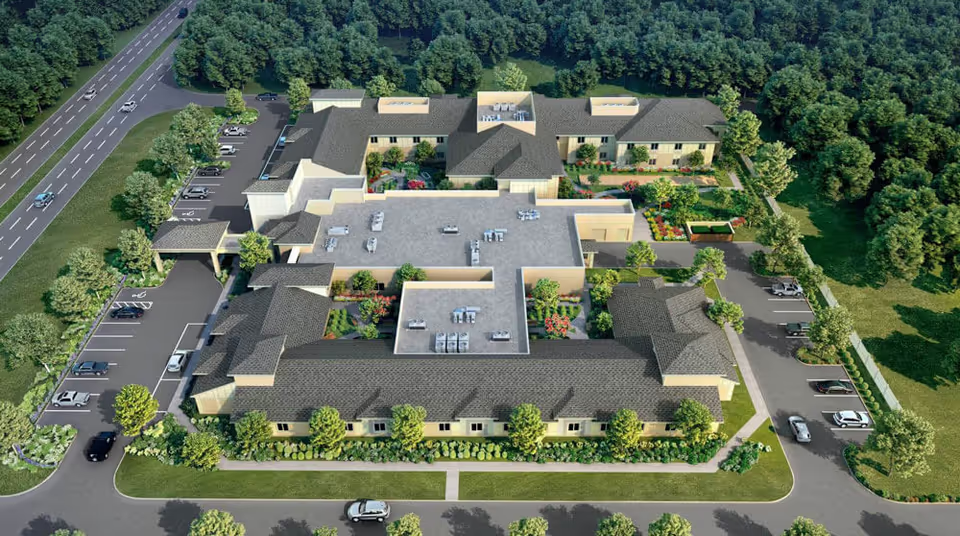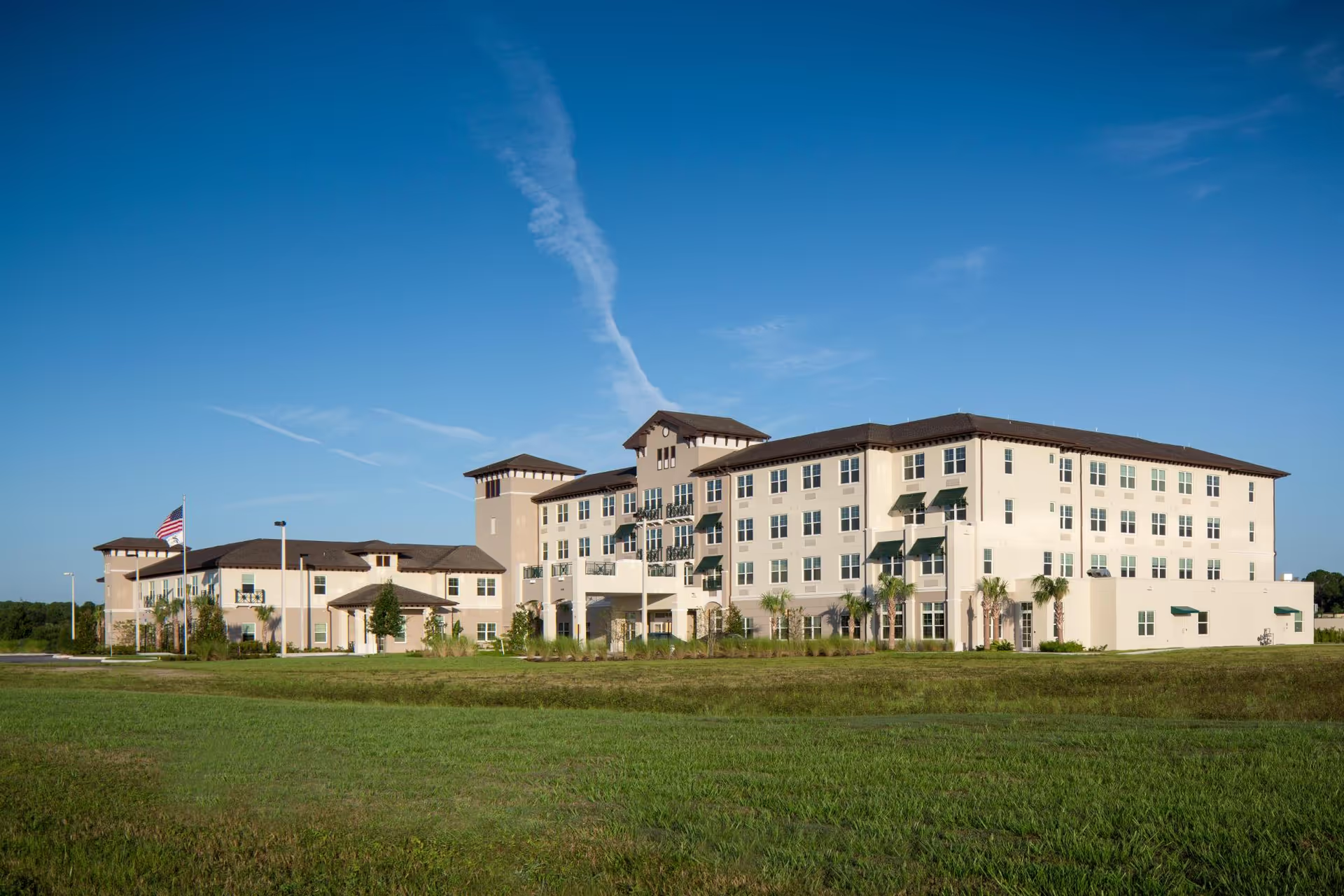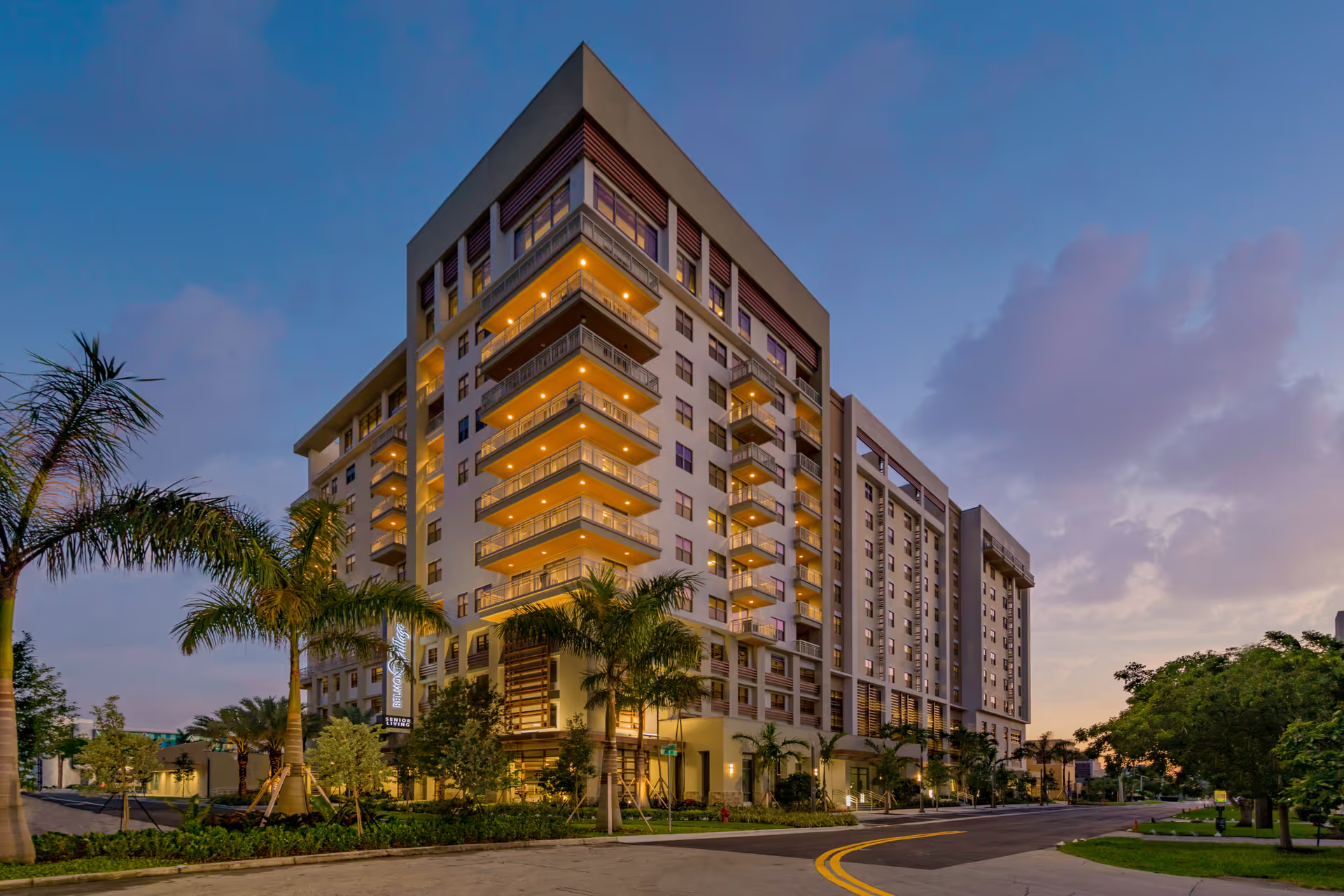Overall sentiment in the reviews for Serenades at Longwood is strongly positive, with an overwhelming majority of summaries highlighting the staff as the facility’s greatest strength. Across many reviews, caregivers, nurses and management are described as compassionate, attentive and resident-focused. Multiple commenters emphasize that staff members learn residents’ names, greet families warmly, and take a hands-on, team-oriented approach. This consistent praise extends to visible leadership: reviewers frequently mention an accessible director and management who engage with families and are present in day-to-day life.
The facility itself receives consistent compliments for cleanliness, maintenance and design. Reviewers describe the building as bright, well-lit, newly built or freshly maintained, with a home-like and well-decorated interior. Outdoor spaces such as an interior courtyard and gardens are repeatedly noted as pleasant, safe areas for walks and social time. Safety and monitoring are also emphasized: families point to Alzheimer’s-focused design elements, safety sensors, secure premises and technology intended for both cognitive stimulation and discreet monitoring while respecting resident privacy.
Activities and programming are another prominent positive theme. Many reviewers report a jam-packed, stimulating activities calendar that includes memory games, arts and painting, themed celebrations, music events (including SongBirds), intergenerational festivities, therapy dogs and iPad-based activities. Multiple accounts mention resident art displays and level-appropriate educational programming. Families often describe the community atmosphere as vibrant and engaged, with staff participation in celebrations and strong encouragement for social interaction. Several reviews specifically credit the programmatic focus for improving resident mood, socialization and participation after transitions to memory care.
Dining gets largely favorable mentions as well: reviewers compliment meal quality, elegant presentation and an excellent chef in several accounts, though a few note limited variety in menu options. Overall impressions often pair the good dining experience with the facility’s cleanliness and hospitality. Communication with families is framed positively in many summaries: reviewers describe frequent updates, proactive coordination with doctors and accessibility of management during difficult transitions.
Despite the many strengths, there are noteworthy negative reports that appear in a minority of summaries and should be taken seriously. A number of reviews report infection-related incidents—specifically scabies and MRSA—in which families allege delayed treatment or delayed notification. Those accounts include assertions of miscommunication, incorrect caller identification, and, in at least one case, deterioration that led to transfer to another facility where the resident reportedly improved. There are also isolated but serious allegations regarding dining hygiene (e.g., unwashed hands), disrespectful behavior, and even accusations of racist conduct by upper management. Several reviewers mention inconsistent caregiver quality across shifts, describing days when staff performance was excellent and other days when it was poor or passive. A few comments indicate dissatisfaction with how the dementia unit was represented to families.
In synthesis, the dominant pattern is one of strong, resident-centered care delivered in a clean, well-appointed, memory-care-focused community with an active programming calendar and good family communication. The recurring positives—compassionate staff, visible leadership, structured activities, safety features and generally good meals—form the core of the facility’s reputation among reviewers. However, multiple isolated but consequential concerns around infection control, inconsistent staff performance, communication breakdowns, and at least one serious managerial complaint emerge across several reviews. These negative reports are not the majority but are significant because they relate to resident safety and trust. For a balanced assessment, prospective families should weigh the facility’s clearly stated strengths in staffing, programming and environment against the reported incidents and consider asking direct questions about infection control protocols, staff turnover and training, shift consistency, and how the facility handles and communicates critical incidents.







